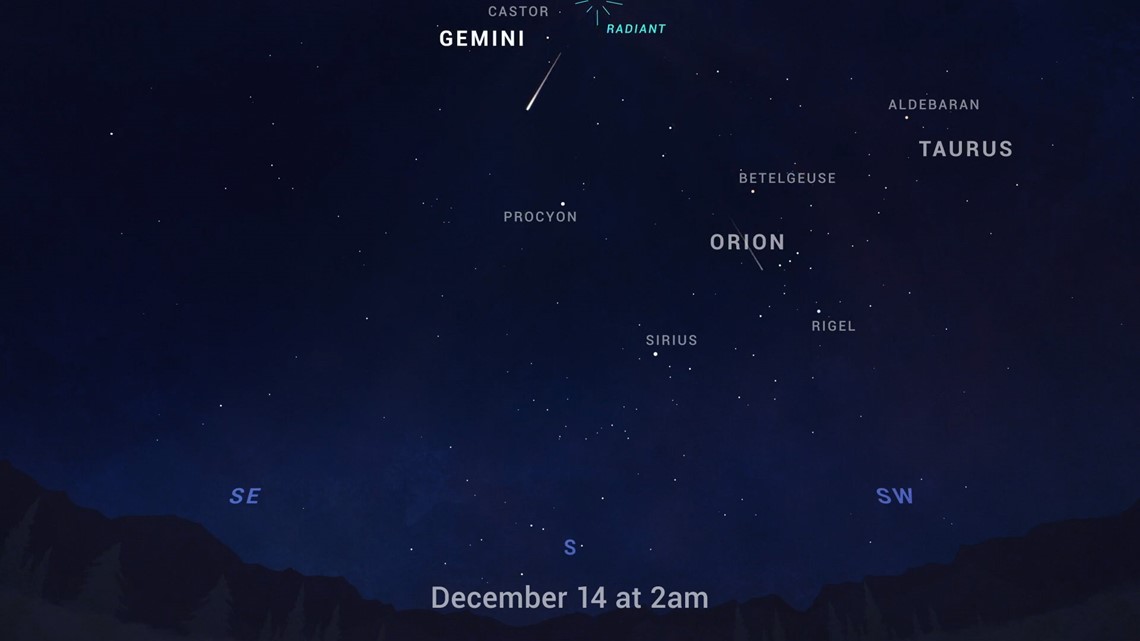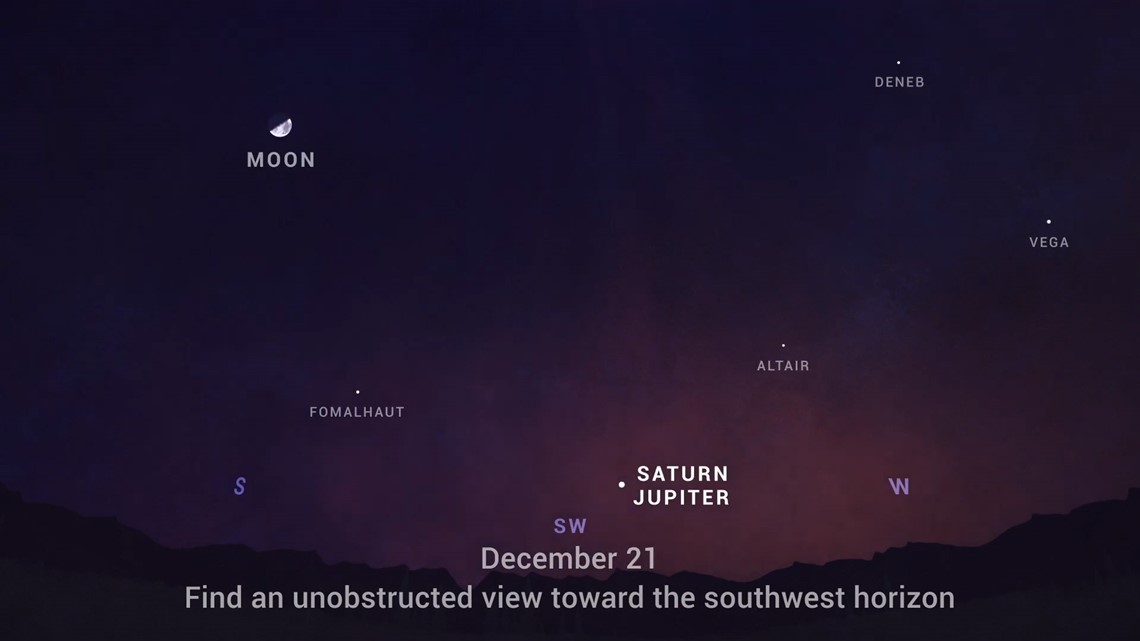ST. LOUIS — The night sky this December is filled with wonder and awe.
As the earliest sunsets of the year occur this week across Missouri and Illinois, we are looking ahead toward Monday, Dec. 14. The Geminids meteor shower peaks early that morning. It happens to be a new moon, so any meteors won't have to compete with the light from the moon to stand out.
You'll want to look to the southern sky near the constellation Gemini away from city lights. Weather permitting, there could be a few meteors in the days leading up to and after the peak early Monday.


All this month, Jupiter and Saturn have been getting closer together in the sky. In the hour or so after sunset, you'll find them low in the southwest sky.
They will be closest on Monday, Dec. 21 — so close that they will appear about the thickness of a dime held at arm's length. This is known as the "great conjunction" as every 20 years this century, the orbits of Earth, Jupiter and Saturn align making the two planets appear close. The closeness of Jupiter and Saturn gives the effect of what some are calling the "Christmas Star."
Both planets and some of their moons will be visible with binoculars or a small telescope. For the next couple of weeks, the two planets will get closer to each other each night reaching the great conjunction on Dec. 21.


It's the closest the planets have appeared since March 4 in the year 1226. It last occurred in the summer of 1623, but it wasn't visible on Earth since the planets were just 4 degrees from the sun.
The two planets will not appear this close in the sky again until 2080.
Dec. 21 is also the winter solstice in the Northern Hemisphere. The sun will be at its southernmost position in the sky, no matter where on Earth you happen to be.
Download the free 5 On Your Side app to get the latest watches and warnings and track conditions live with our interactive radar. Use the links below to download now.
5 On Your Side news app
iPhone | Google Play
RELATED: Who to call after a winter car crash

